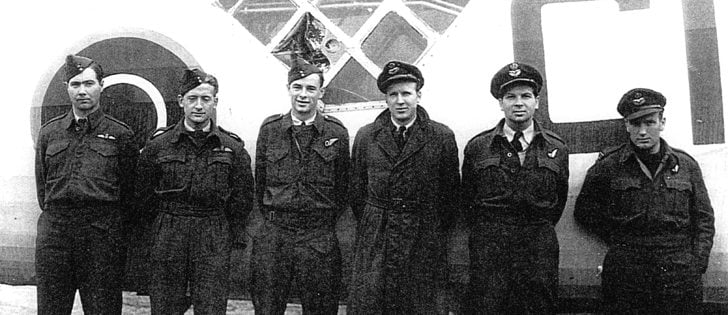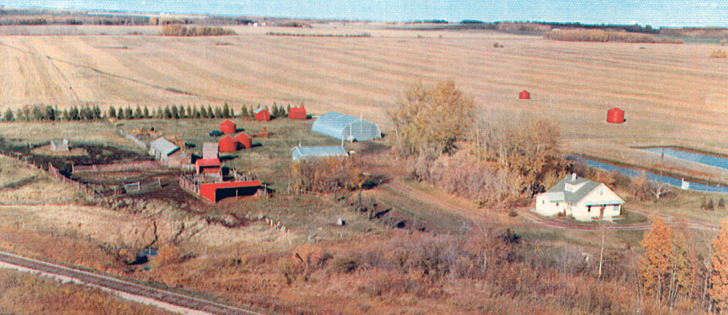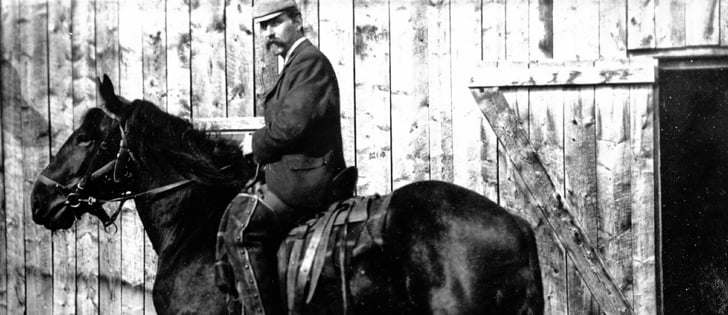William L. Hayes joined the Canadian Expeditionary Force (CEF) in 1915 as a private and returned from the Great War in 1919 as a lieutenant with a Military Cross and a German wife.
Hayes, who had homesteaded near Bjorkdale, Sask., in 1908, farmed during the summer months and worked in logging camps at Crooked River as the camp cook during the winter.
When the call came for men to form the 2nd Canadian Division in February, 1915, he volunteered, just before his 27th birthday and joined the 28th (NW) Battalion.
Read Also

Students urged to consider veterinary medicine
Alberta government makes $86.5 million investment in University of Calgary to double capacity for its veterinary medicine program to address labour shortages in the field.
He arrived in England for training in June, 1915, but on Sept. 11 received 96 hours detention and forfeited four days pay for being absent. Curiously, he was awarded a qualification as a bomb (grenade) thrower the next day so did not serve his detention.
A war history written later records a grenade section being created in the battalion of men keen on the idea of man-made tin can grenades.
His nighttime practice led to considerable alarm throughout the area. But the army wanted such skill among its troops so it seems to have dealt with him lightly.
By the end of September, he was in Belgium near Ypres. He would not be out of the sound of the guns for three years. He also fought at Somme, Vimy, Passchendaele, Amiens, Arras and Iwuy and was part of the occupying force on the Rhine.
Vimy Ridge was a strategic height of land held by the Germans from 1914. The French had attempted to take it in 1914 and 1915 unsuccessfully with 150,000 casualties.
The British tried several times to acquire it in 1916 but the Canadians took it in April 1917 in five hours.
The artillery used 1.6 million shells in the attack and 97,000 men, the entire Canadian force with no reserves. In total, 10,600 were wounded, 3,600 were killed and four Victoria Crosses were awarded.
Amazingly, although casualties of the Great War, wounded, dead and missing, are alarming, nine out of 10 soldiers returned home.
Infantrymen like Hayes were in the trenches or front lines for only five to eight days per month so survival was a matter of being at the right place at the right time.
Hayes was wounded twice, including the first one at Rozieres at the Battle of Amiens in August, 1918.
Jack Bridge, a friend who was with him, reported that Hayes “was hit four times, both water bottles shot off, his left wrist bruised by a bullet. A final bullet struck one of the stars on his shoulder, glanced off and broke the skin on his throat. WLH had been lying flat on his face on the ground, but the impacts turned him on his back.”
As a platoon commander of C Company, he was part of the attack on the village of Iwuy, France, in October, 1918. This was a severe and little known battle, but it was for action here that he was awarded the Military Cross.
Details are sketchy but Hayes suffered a gun shot wound to one arm. He “continued at duty” and attacked a machine gun post in a house single handedly.
Hayes became the Company Quartermaster of D Company in June, 1916, a role he kept until he was sent to England in December, 1917, for officer training. He returned to the battalion in July, 1918.
At the end of the war, the CEF marched to the Rhine and was entrusted with the occupation of Bonn. Back with the Quartermasters, Hayes acted as a billeting officer to find accommodation for the troops.
He met his future wife at the first house he encountered at the end of the Bonn Bridge. They were married in 1920 and returned to their Canadian homestead where they lived there until his death in 1959.
For more information, visit www.williamhayes-ww1-wardiary.co.uk.















